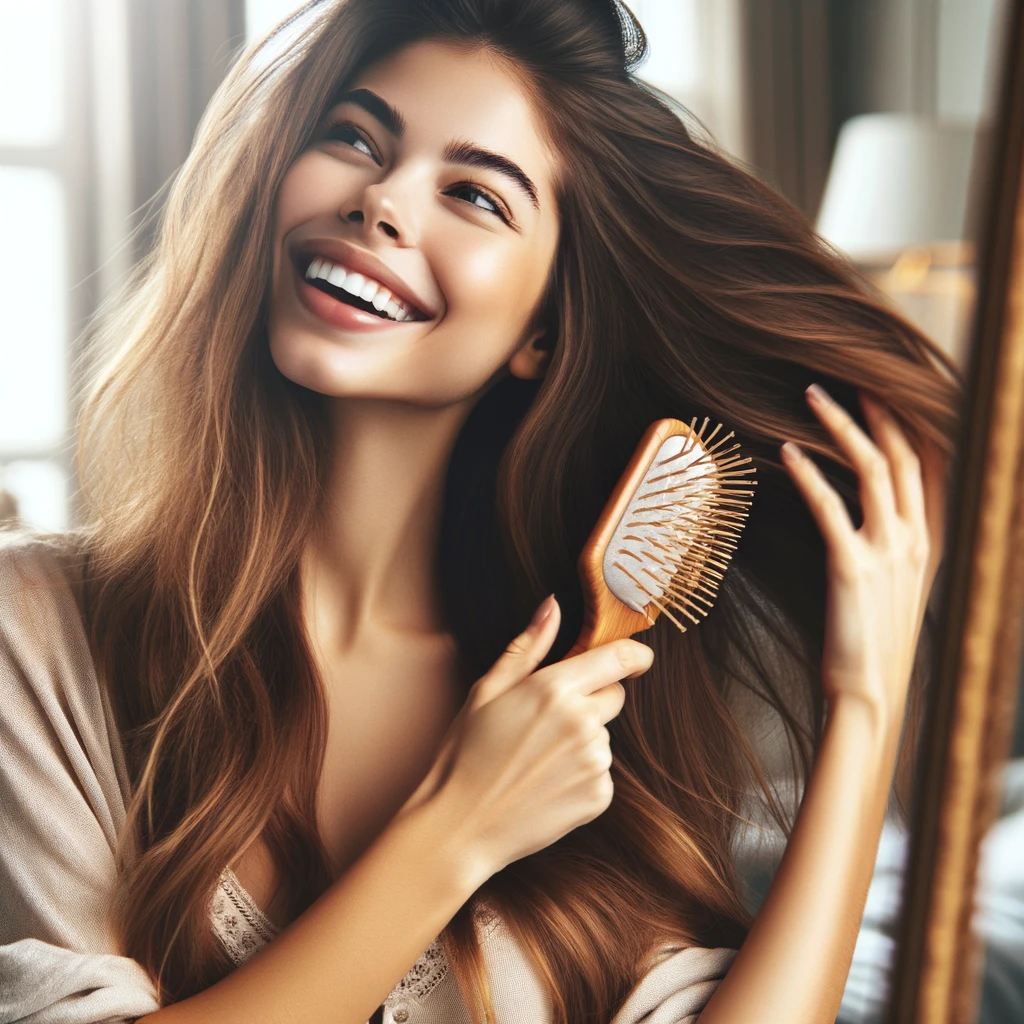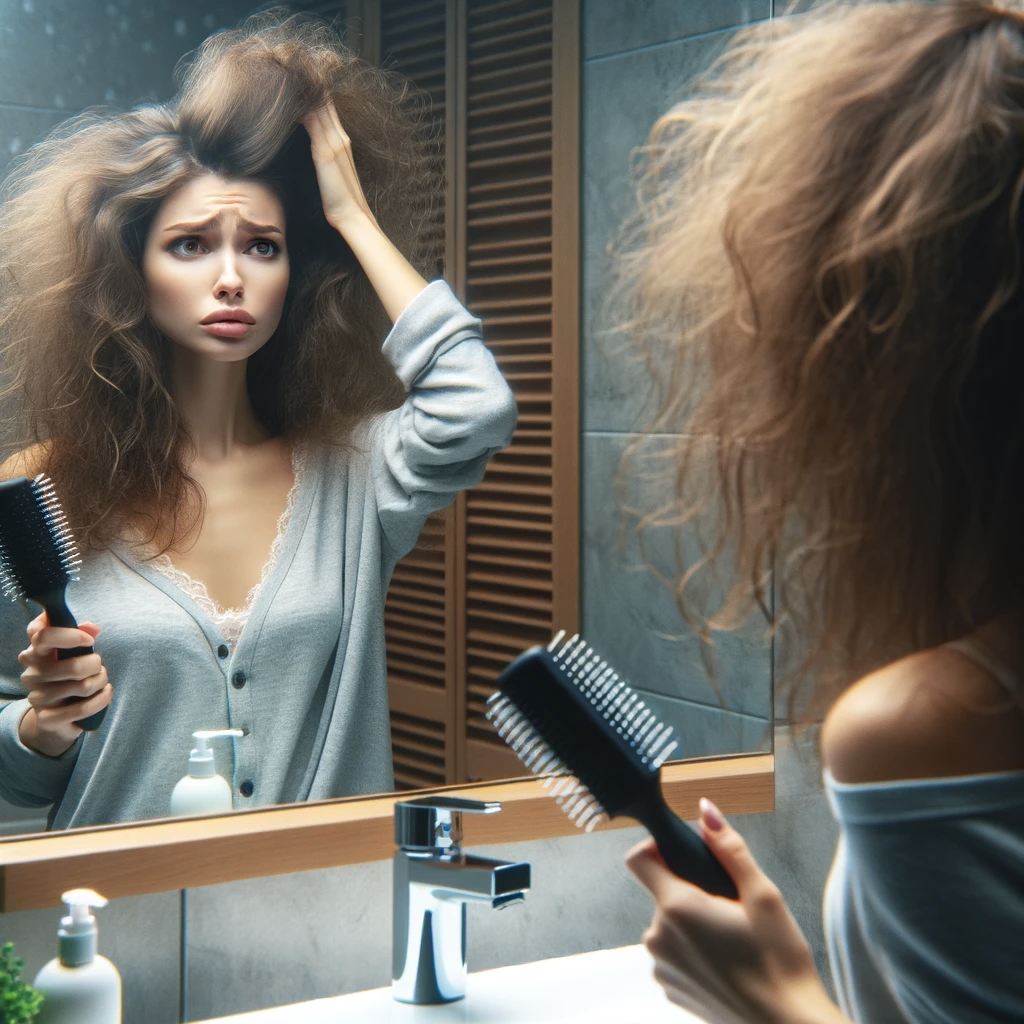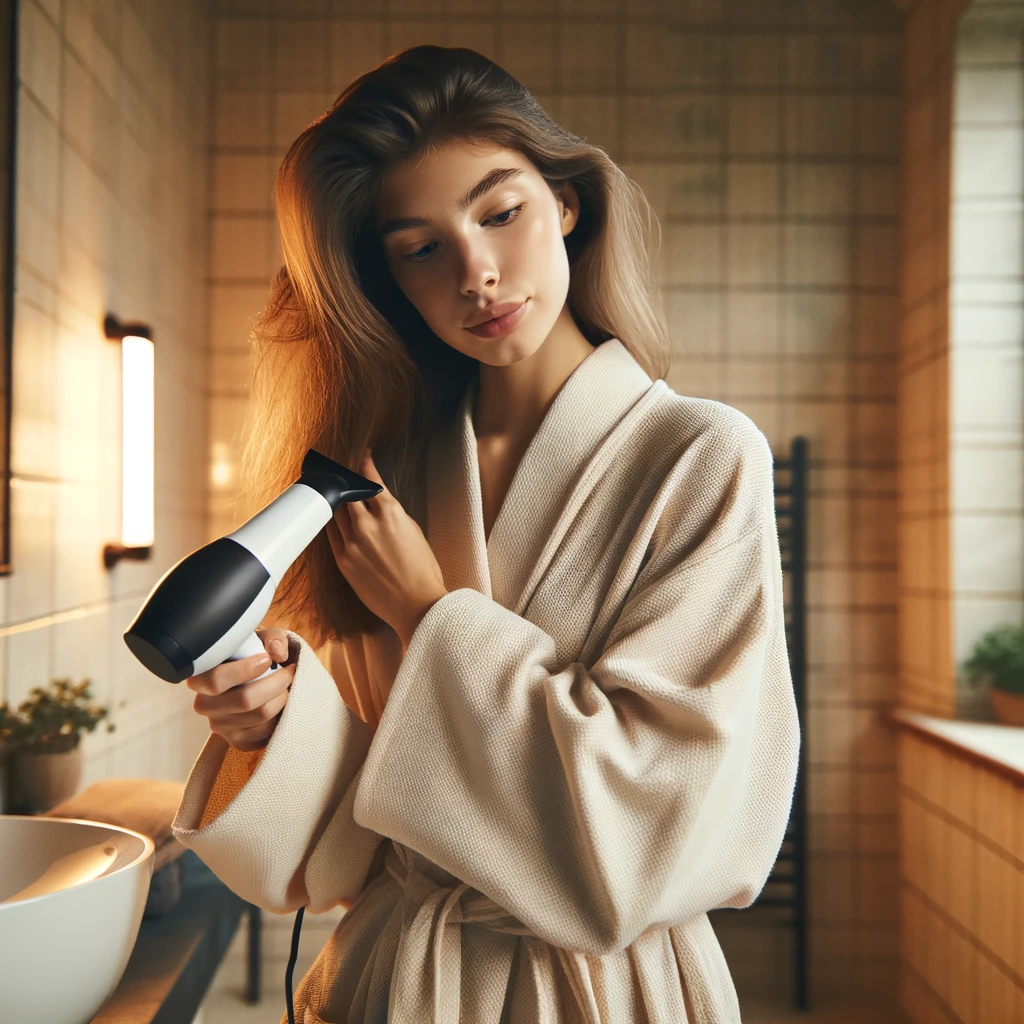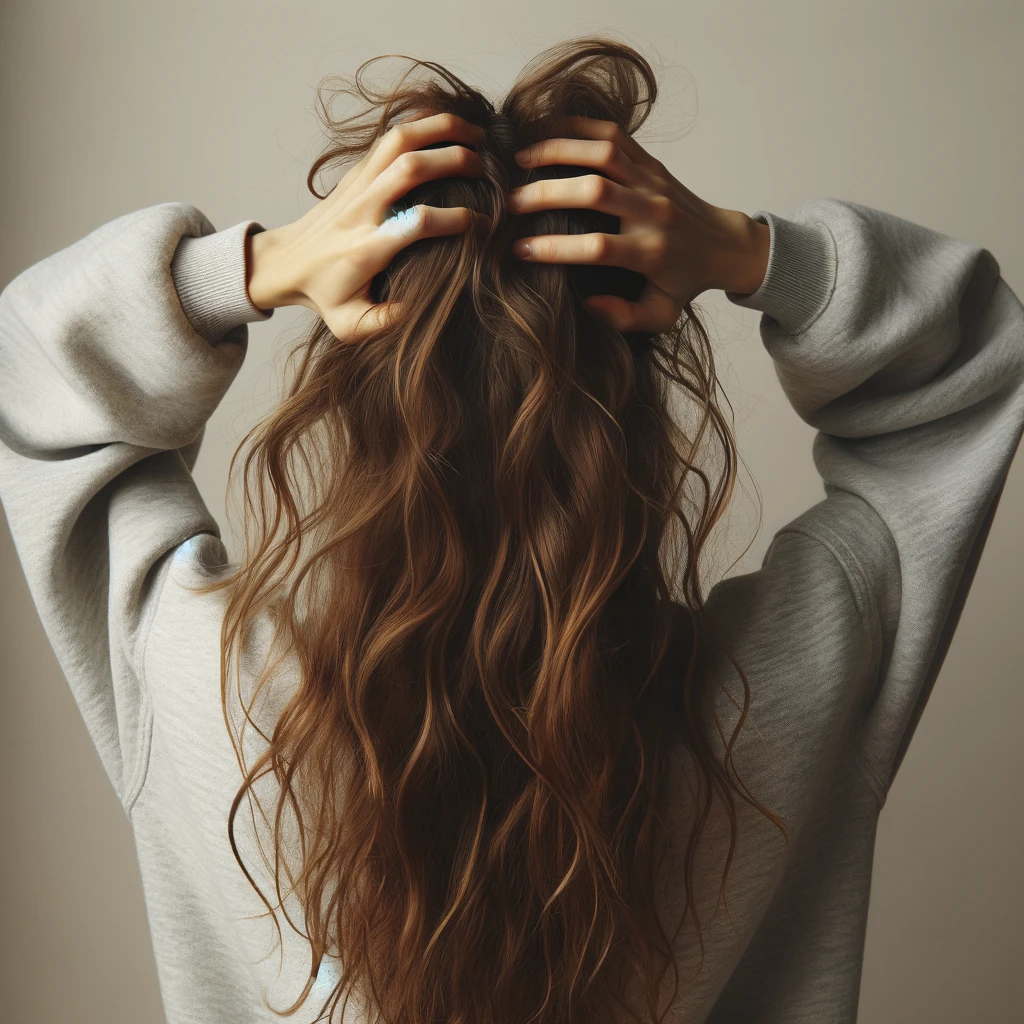How to Prevent and Heal Heat Damaged Hair
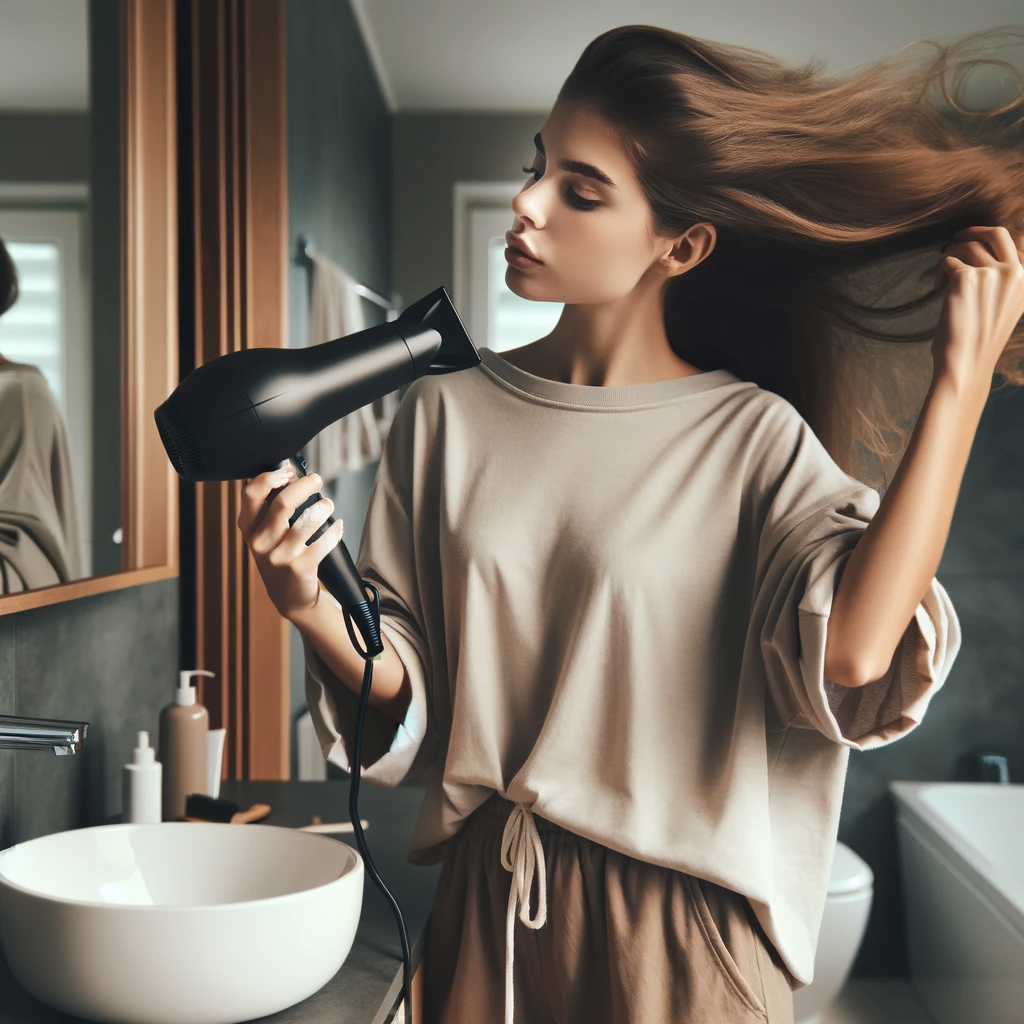
In this article:
On the way towards achieving the perfect hairstyle, we often rely on heat tools that, unfortunately, can lead to heat damaged hair. This article dives deep into understanding the reasons of heat damage and practical strategies to repair and prevent it.
How Does Heat Damage Hair
Heat styling tools, used for various hairstyles, can significantly damage hair if not used carefully. Excessive heat disrupts the hair's keratin proteins, vital for strength and elasticity, transforming them and leading to weakened hair fibers. Heat dries the hair, leaving it brittle and prone to breakage.
Specific Causes of Heat Damage Include:
- Lack of Heat Protection: Skipping a heat protectant means the hair is exposed directly to intense temperatures.
- Frequent Heat Styling: Regular heat exposure without allowing hair to recover the damage, weakens hair health over time.
- Using Low-Quality Styling Tools: These often have uneven heat distribution, creating hot spots that can cause localized damage.
- Styling Unhealthy Hair: Applying heat to damaged or brittle hair can worsen its condition.

Signs of Heat Damaged Hair
Recognizing the signs of heat damage is crucial for taking steps towards recovery. Let's explore these common signs in detail:
- Dryness: When hair is exposed to frequent high heat, it loses its natural moisture and oils. This evaporation of water from the cortex leads to hair that feels and looks dry.
- Breakage: The heat weakens hair fibers, making them more prone to snapping under the slightest tension. This is often noticeable when styling or brushing your hair.
- Split Ends: Regular application of high heat can cause the tips of your hair to split apart. This affects the hair's appearance and overall health, as split ends can travel up the hair shaft if left untrimmed
- Flyaways: Damaged hair often results in broken strands that stick out and create an unkempt appearance, known as flyaways. These are particularly noticeable in styled hair that otherwise looks smooth.
- Frizziness: Frizz occurs when hair is damaged, and the cuticles are lifted, allowing moisture from the air to swell the strands. This results in hair that stands up or curls away from the rest of your mane, creating a frizzy texture.
- Hair Loss: While it's normal to shed hair daily, excessive hair loss can be a sign of heat damage. Weakened hair is more likely to fall out, especially when brushing or styling.
- Texture Changes: Heat damage can alter your hair's texture, making it feel rough. If your hair no longer feels smooth or looks as vibrant as it used to, it might be suffering from heat damage.
How to Fix Heat Damaged Hair
Here's a step-by-step guide on how to heal heat-damaged hair, tailored to different hair types and conditions:
- Trim the Split Ends: Begin with a trim to remove split ends. A more significant trim may be necessary for more severe damage to give your hair a fresh start.
- Intensive Repair: After trimming, overhaul your hair care regimen with products to repair and nourish your hair. Look for deeply hydrating and restorative formulas.
- Bond-Building Treatments for Colored Hair: For those with colored and heat-damaged hair, incorporating a bond-building treatment into the coloring process can protect and strengthen hair.
- Gentle Washing and Styling: Treat your hair gently during washing and styling. Avoid harsh rubbing or tugging, which can lead to further damage. Be extra careful especially on the mid-lengths and ends, where damage is most prevalent.
- Nourishing Oils and Lotions: Incorporate nourishing oils and lotions into your styling routine. These products add hydration and manageability, making your hair softer and easier to style without heat.
Recovery Time
The recovery time for heat-damaged hair varies depending on the level of the damage and how you follow a repair regimen. Minor damage may show improvement within a few weeks, while severely damaged hair may take several months to a year to fully recover. Consistency with these steps is vital to restoring your hair's health.

How to Prevent Heat Damaged Hair
To prevent heat damaged hair and maintain its health, follow these concise expert tips:
- Apply Heat Protectant: Essential before using any heat tools to shield hair from damage.
- Lower Heat Settings: Keep styling tools below 350°F to avoid excessive heat damage.
- Reduce Heat Styling: Opt for heat-free styling methods like rollers or braids for natural looks.
- Careful Drying: Towel-dry gently, then blow-dry on a cool setting, holding the dryer at least 6 inches away.
- Limit Hair Coloring: Extend intervals between dyeing sessions and use gentle shampoos to minimize damage.
- Regular Trims: Trim every 6-8 weeks to prevent split ends and maintain hair health.
- Gentle Detangling: Use a wide-tooth comb, starting from the ends, to reduce breakage.
- Hydrate: Incorporate deep conditioning treatments and natural oils to keep hair moisturized.
- Heat-Free, Low-Tension Hairstyles: Opt for loose buns, braids, or heatless curls to minimize strand stress. Use soft ties and clips to avoid pulling and breaking.
Final Thoughts
In summary, safeguarding your hair from heat damage involves careful practices and the right products.
However, the foundation of genuinely resilient hair lies in the products you use daily.
Luxe-Cosmetics' Hair Growth Serum and Hydrate & Repair Shampoo and Conditioner are essential allies in this endeavor. These products help prevent and repair heat damage and nurture your hair back to health, promoting stronger, healthier growth

Josef Mohamed
Josef Mohamed is a Content Marketer and Web Designer with over 6 years of experience.He brings a wealth of knowledge to his work, making him a reliable source for readers interested in practical insights about beauty.His writing style is straightforward, aiming to provide real facts and avoid common myths in the beauty industry.

